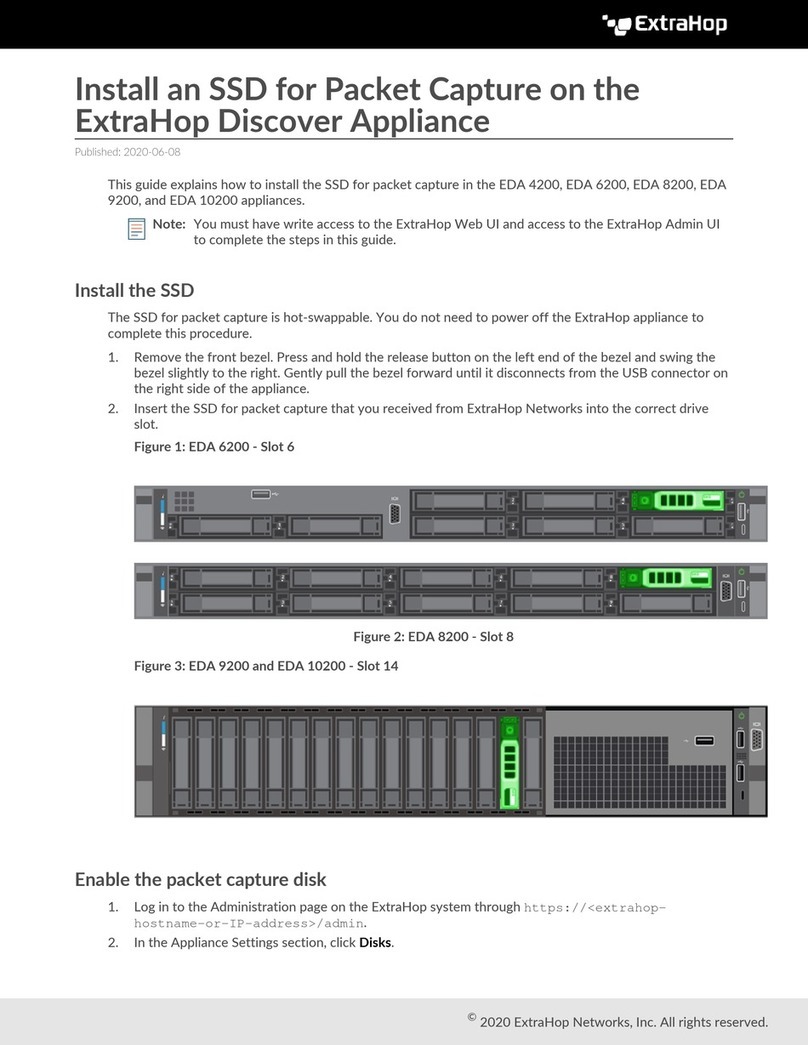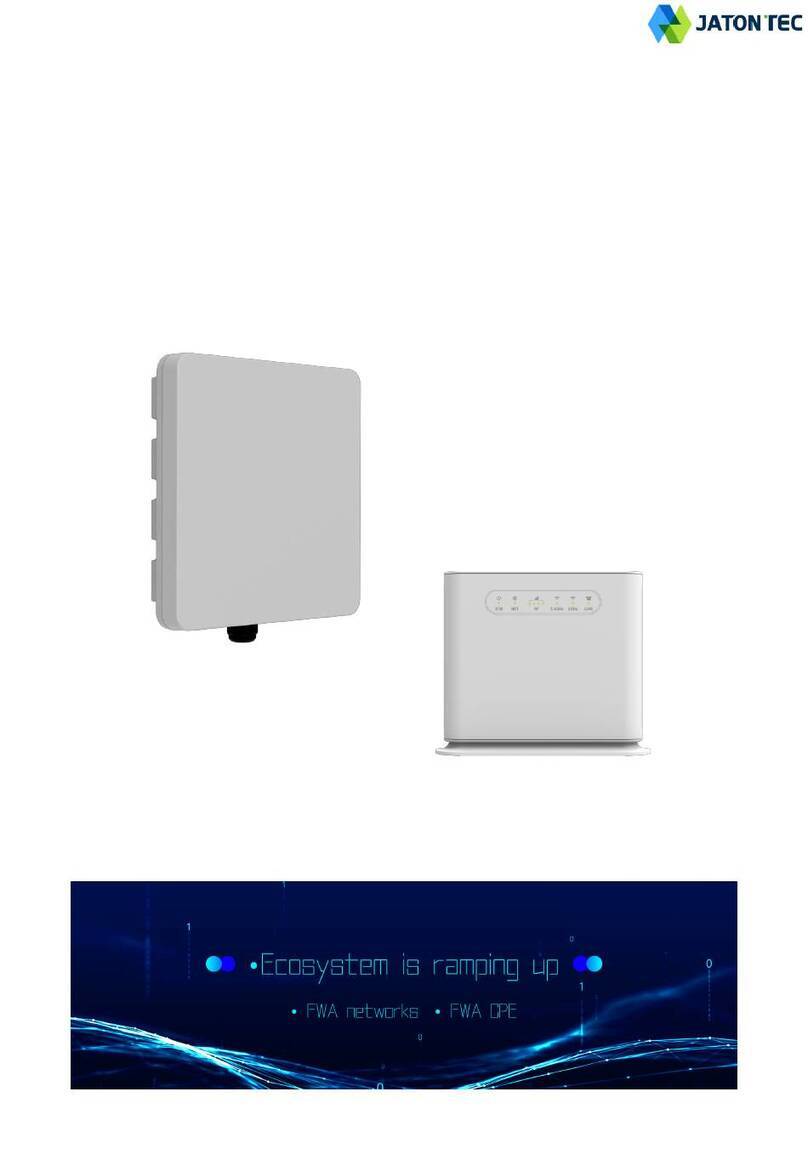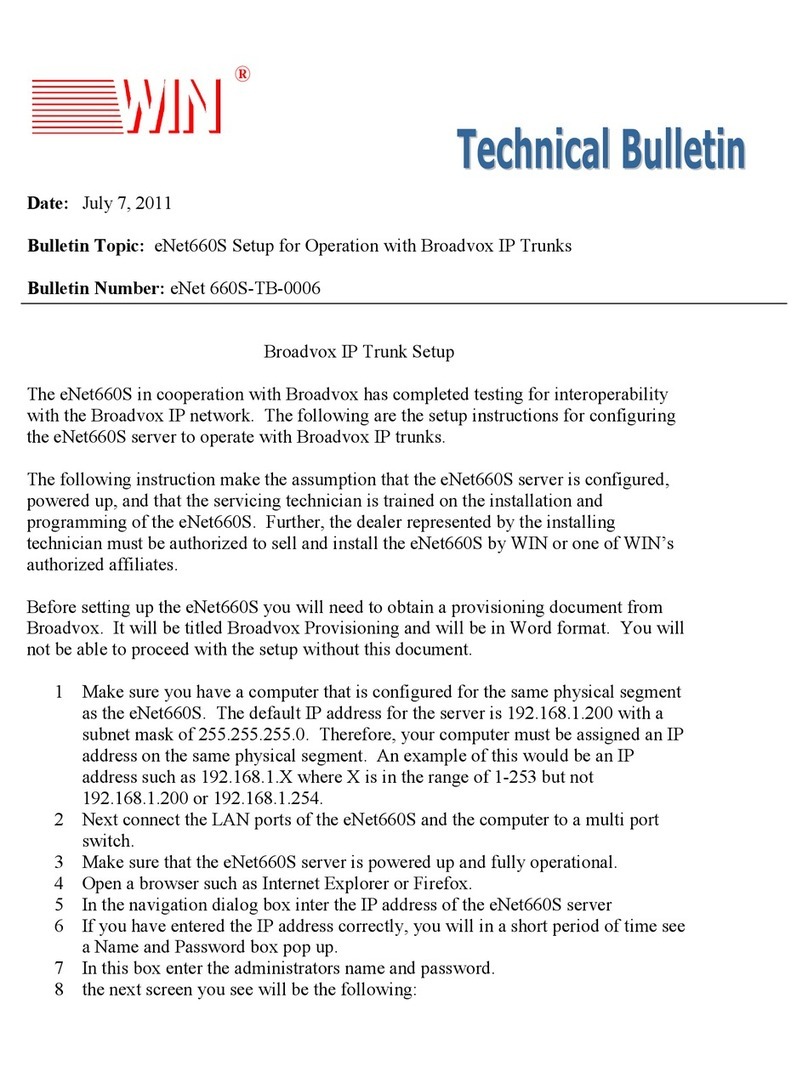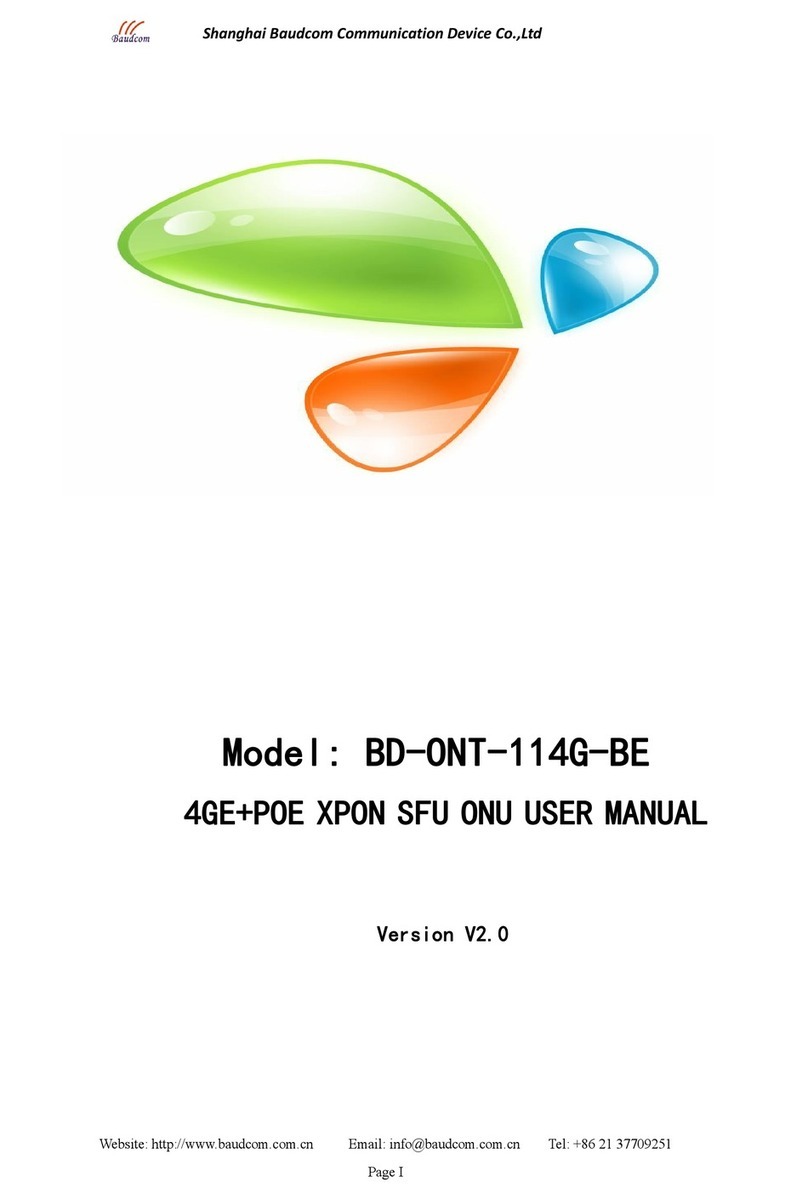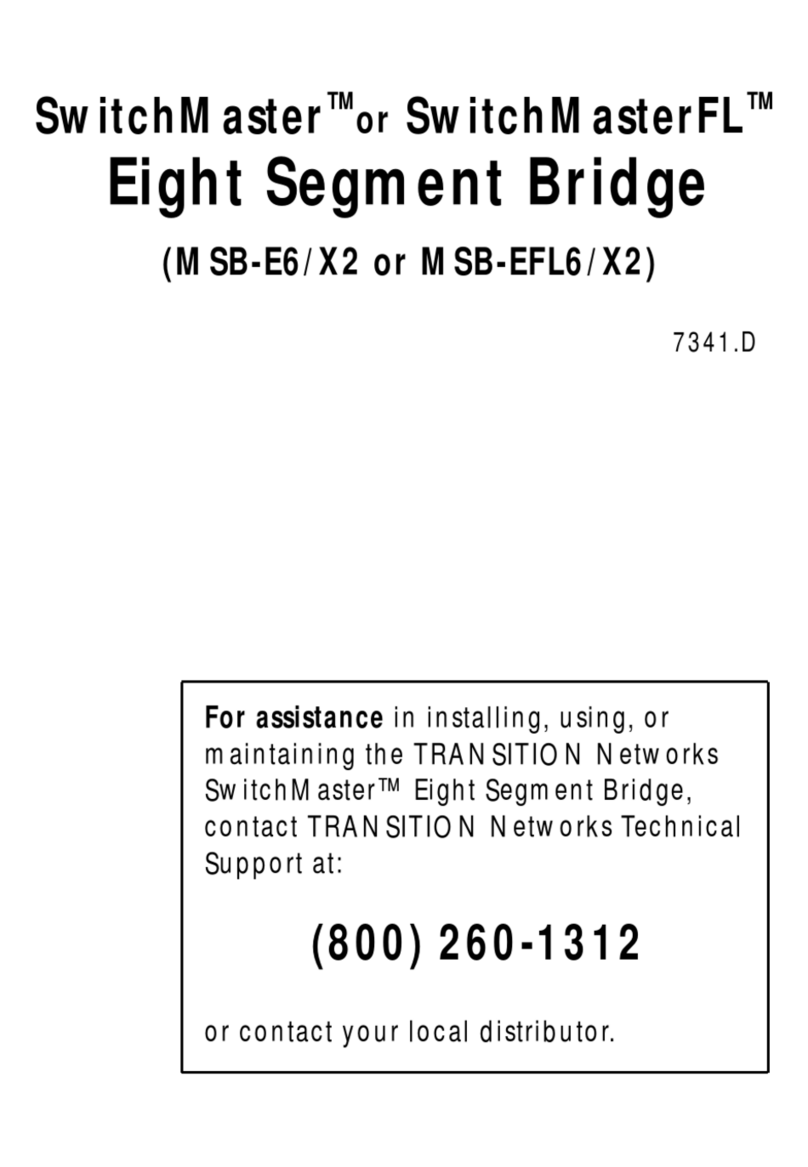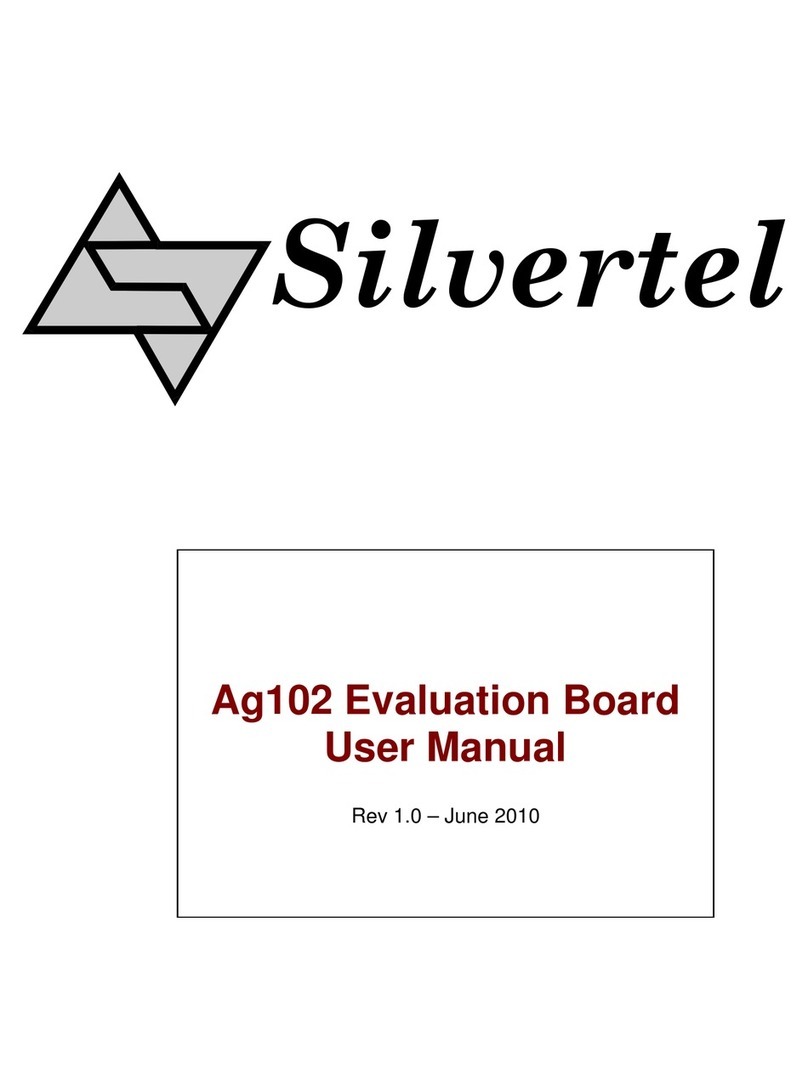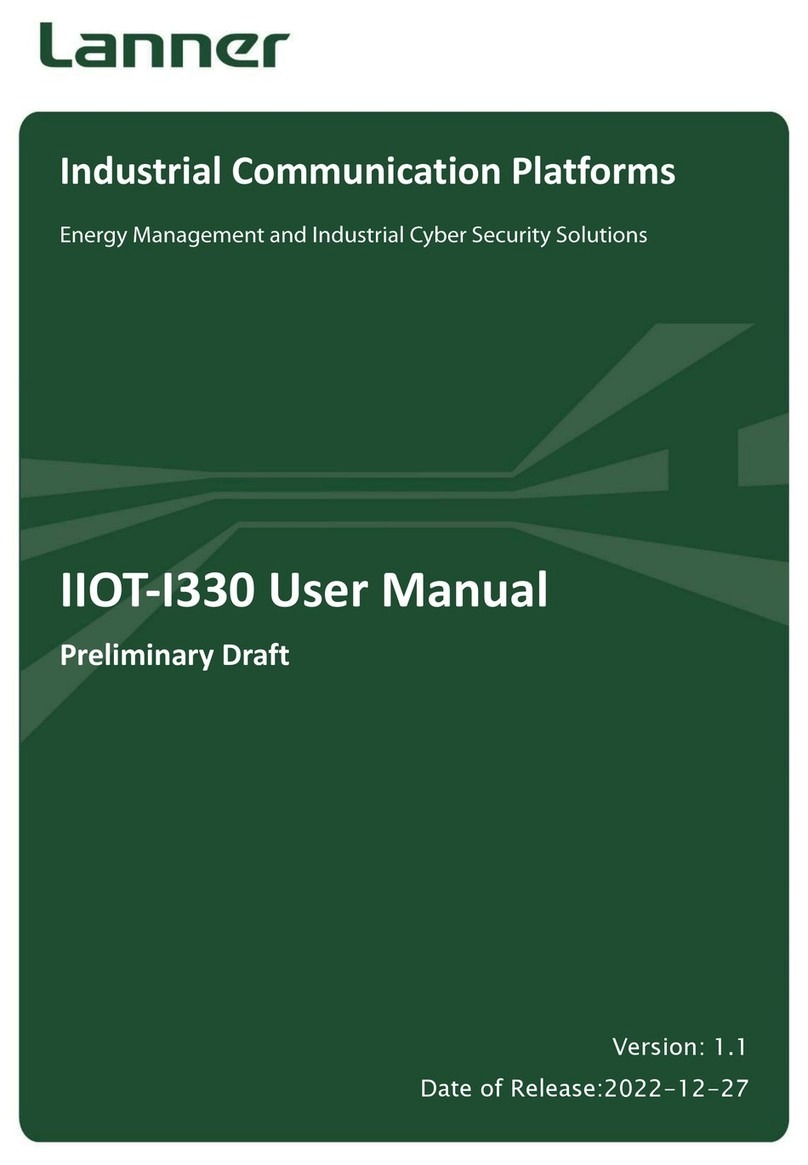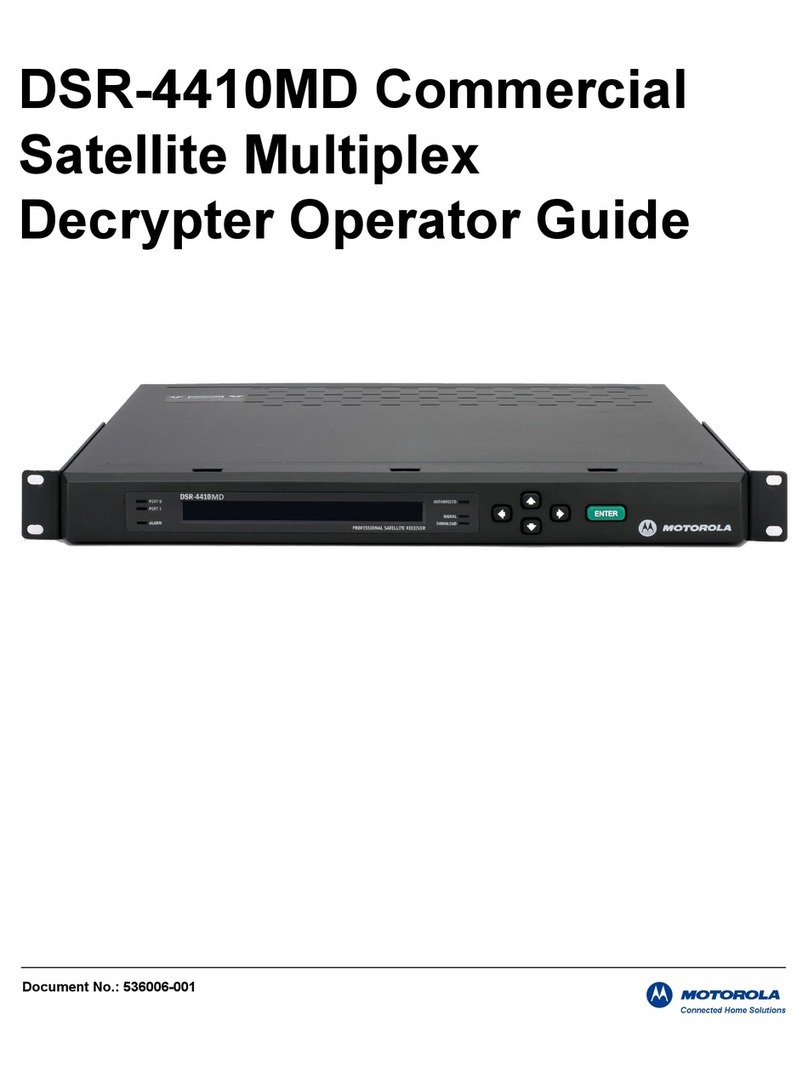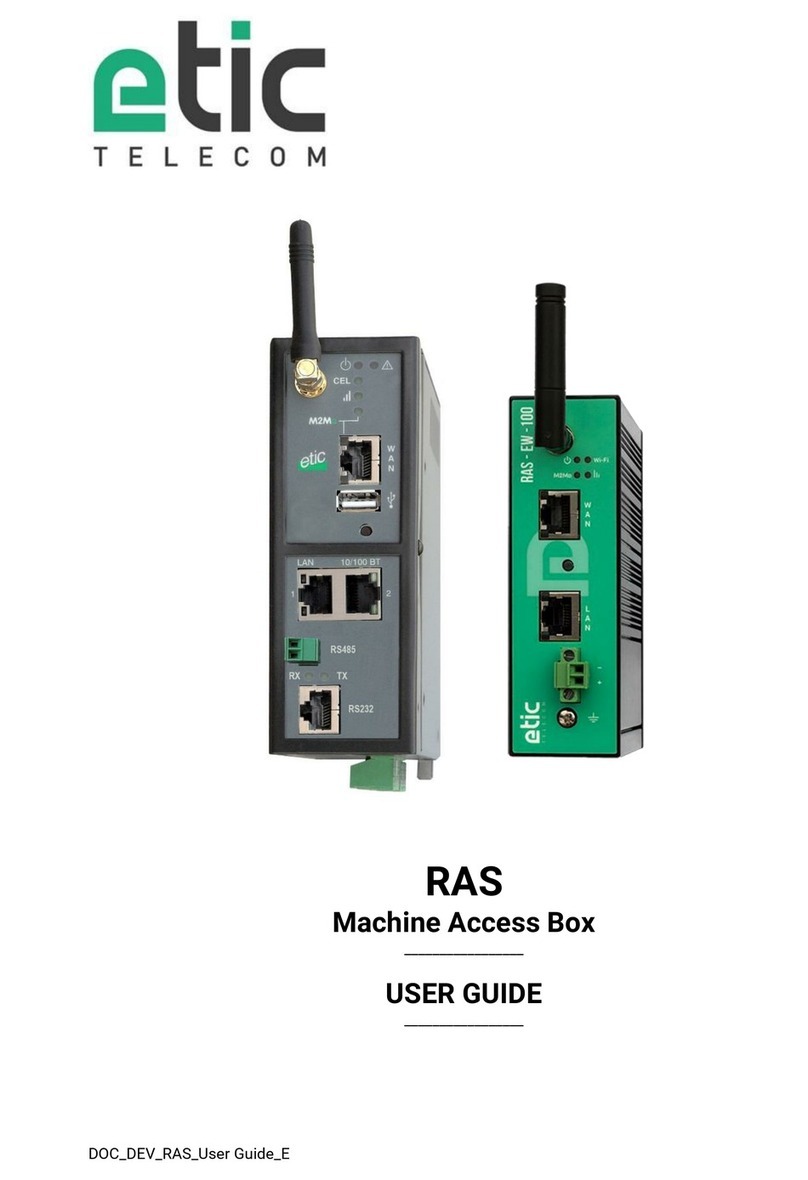ESD electronic CAN-PCI/266 Instruction manual

Installation and Technical Data CAN-PCI/266 Rev. 1.1
CAN-PCI/266
Passive 66-MHz
PCI-CAN Interface
Hardware Installation
and
Technical Data

Installation and Technical Data CAN-PCI/266 Rev. 1.1
Document file: I:\texte\Doku\MANUALS\CAN\PCI\266\Englisch\PCI-266_11H.ma9
Date of print: 22.08.2003
Described PCB version: CAN-PCI/266 Rev. 1.0
Changes in the Chapters
The changes in the user’s manual listed below affect changes in the hardware, as well as changes
in the description of the facts only.
Chapter Changes versus previous version
6. Chapter ‘Correctly Wiring Electrically Isolated CAN Networks’ revised
Further technical changes are subject to change without notice.

Installation and Technical Data CAN-PCI/266 Rev. 1.1
N O T E
The information in this document has been carefully checked and is believed to be entirely reliable. esd
makes no warranty of any kind with regard to the material in this document, and assumes no
responsibility for any errors that may appear in this document. esd reserves the right to make changes
without notice to this, or any of its products, to improve reliability, performance or design.
esd assumes no responsibility for the use of any circuitry other than circuitry which is part of a product
of esd gmbh.
esd does not convey to the purchaser of the product described herein any license under the patent rights
of esd gmbh nor the rights of others.
esd electronic system design gmbh
Vahrenwalder Str. 207
30165 Hannover
Germany
Phone: +49-511-372 98-0
Fax: +49-511-372 98-68
E-mail: info@esd-electronics.com
Internet: www.esd-electronics.com
USA / Canada
esd
PMB 292
20423 State Road 7 #F6
Boca Raton, Florida 33498-6797
USA
Phone: +1-800-732-8006
Fax: +1-800-732-8093
E-mail: sales@esd-electronics.com

Installation and Technical Data CAN-PCI/266 Rev. 1.1 1
Contents
1. Overview .................................................................3
1.1DescriptionoftheModule .................................................. 3
1.2PCBViewandPositionoftheConnectors......................................4
2. Hardware Installation .......................................................5
3. Summary of Technical Data ..................................................7
3.1GeneralTechnicalData .................................................... 7
3.2PCI-Bus ...............................................................7
3.3CANBus .............................................................. 8
3.4 Software Support ........................................................8
3.5OrderInformation ........................................................ 9
4. Front Panel View with LED Display .......................................... 10
5. Connector Assignment of the CAN Interfaces .................................. 11
5.1 CAN Interface at DSUB9 Connector ......................................... 11
5.2Option:DeviceNet-Interface ............................................... 12
6. Correctly Wiring Electrically Isolated CAN Networks ............................ 13

Installation and Technical Data CAN-PCI/266 Rev. 1.12
This page is intentionally left blank.

Overview
Installation and Technical Data CAN-PCI/266 Rev. 1.1 3
+5 V=
+5 V=
+5 V=
+5 V=
C
A
N
B
U
S
CAN
CAN
IRQ A
Physical
CAN
Layer
LEDs
optional
PLD
C
A
N
B
U
S
electrical isolation
DC/DC
Converter
DSUB9
CiA pinning
CAN Controller
SJA1000
PCI Bridge
PLX PCI9056
electrical isolation
DC/DC
Converter PCI Card Edge Connector
CAN Controller
SJA1000
Physical
CAN
Layer
DSUB9
CiA pinning
2nd CAN Interface
only at
CAN-PCI/266-2
1. Overview
1.1 Description of the Module
Fig. 1.1: Block circuit diagram of CAN-PCI/266
The CAN-PCI/266 is a passive PCI-bus board for 66 MHz PCI-bus systems with one or optional two
CAN-interfaces. The CAN-PCI/266 works with a bus width of 32 bits. The module can also be used in
33 MHz PCI-bus systems at a bus speed of 33 MHz.
The ISO 11898 compliant CAN-interfaces allow a data transfer rate of 1 Mbit/s. Among many other
features the bit rate can be parametrised by software.
The CAN interface is electrically isolated from the other potentials by optocouplers and DC/DC-
converters.
Optional the board can be delivered with DeviceNet interface or Single-Wire interface.
The CAN-PCI-266-2 (with two CAN-interfaces) is equipped with four LEDs in the front panel.

Overview
Installation and Technical Data CAN-PCI/266 Rev. 1.14
1.2 PCB View and Position of the Connectors
Fig. 1.2: Top layer view of the module with 2x CAN (CAN net 1 optional)

Installation
Installation and Technical Data CAN-PCI/266 Rev. 1.1 5
2. Hardware Installation
Attention!
Electrostatic discharge may cause damage to electronic devices. In order to avoid this please follow
the instructions below before you touch the CAN module to discharge your personal static electricity:
@Switch off the power supply of your PC but leave the connector plug in the socket.
@Then touch the metal case of the PC to discharge the static electricity.
@Furthermore you must avoid contact between your clothes and the CAN module.
Execute Hardware Installation:
1. Switch off the PC and allconnected peripheral devices (monitor, printer, etc.). Switch off the CAN
devices of the net to which the CAN module is to be connected.
2. Discharge yourself as described above.
3. Disconnect the power supply of the PC from the mains.
4. Remove the PC cover.
Unfasten the mounting screws at the back of the PC and remove the cover.
5. Select an open PCI slot and remove the slot cover at the back of the PC. Unfasten the screw which
fixes the slot cover and retain it for fixing the module afterwards.
The CAN module can be inserted into every PCI slot. Be careful not to insert the board into an ISA
slot, because this can damage the PC and the board!
6. Insert the CAN module into the selected PCI slot.
Carefully push the board down until it snaps into place.
7. Attach the board.
Use the screw you removed from the slot cover in step 5.
8. Replace the PC cover.
Secure the cover with the screws you removed in step 4.
@@

Installation
Installation and Technical Data CAN-PCI/266 Rev. 1.16
9. Connect the CAN wire.
Please note that the CAN bus has to be terminated at both ends!
esd offers special T- connectors and terminator connectors. Additionally the CAN_GND signalhas
to be connected to earth at exactly one point. For easier wiring the termination connectors are
equipped with an earth connector (4.8 mm fast-on, male).
A CAN participant without an electrically isolated interface acts as an earth connection.
The first CAN interface (CAN net 0) has to be connected via the lower DSUB connector (X1) and
the second CAN interface (CAN net 1) has to be connected via the upper DSUB connector (X3).
10. Reconnect the power supply of the PC.
11. Switch on the PC, the peripheral devices and the other CAN participants in any order.
12. End of hardware installation.
Continue with the software installation as described in the manual ‘CAN-API, with Software Tools
and Installation Notes’.

Technical Data
Installation and Technical Data CAN-PCI/266 Rev. 1.1 7
3. Summary of Technical Data
3.1 General Technical Data
Ambient temperature 0...50°C
Humidity 90 %, non-condensing
Supply voltage
via PCI-bus,
Nominal voltage / current (typ., at 20°C):
5 V ±5% / 0,16 A (2x CAN)
3,3 V ±5% / 0,17 A
Plug- and socket connectors
X1 (DSUB9/male) - CAN Net 0
X3 (DSUB9/male) - optional CAN Net 1
X100 (card edge) - PCI-bus
Dimensions 99,1 mm x 120 mm (board only)
Weight 100 g (2 x CAN)
Table 3.1: General technical data of the module
3.2 PCI-Bus
Host bus PCI bus according to PCI Local Bus Specification 2.2
PCI bus width 32 bit
PCI bus clock rate 66 MHz / 3.3V signalling level or
33 MHz / 5.0V signalling level
Controller PLX PCI9056
Interrupt Interrupt Signal A
Slot position no restrictions for the position of the CAN-PCI/266 on the PCI
bus, PCI bridges are tolerated
Board dimensions compatible with all 'short' PCI-card slots
Connector PCI-card edge connector
Table 3.2: PCI bus data

Technical Data
Installation and Technical Data CAN-PCI/266 Rev. 1.18
3.3 CAN Bus
Number 1,
optional 2 CAN interfaces
CAN controller SJA1000
CAN protocol basic CAN 2.0A/2.0B
Physical layer physical layer according to ISO 11898, transmission rate is
programmable from 10 kbit/s to 1 Mbit/s
Termination has to be set externally
Electrical separation of CAN
interfaces from other units and
from each other
separation by means of optocouplers and DC/DC-converters
DeviceNet-Option
adapter board with DeviceNet connector in Phoenix Combicon
style, optocouplers and CAN driver according to DeviceNet
specification 'DeviceNet Communication Model and Protocol,
Rel. 2.0'
Table 3.3: CAN interface data
3.4 Software Support
The board is shipped with software examples for DOS and Windows 3.11 in source code. Moreover
software drivers are available for Windows-NT, -2K, -XP, -9x, -ME and Linux. Drivers for other
operating systems are available as well.
The CAN-API is described in the manual:
CAN-API with Software-Tools and Installation Notes
Order No.: C.2001.21

Technical Data
Installation and Technical Data CAN-PCI/266 Rev. 1.1 9
3.5 Order Information
Type Description Order No.
CAN-PCI/266-1 1 x CAN 2.0A/B, ISO11898 C.2036.02
CAN-PCI/266-2 2 x CAN 2.0A/B, ISO11898, LEDs C.2036.04
CAN-DRV-LCD Object Licence for Windows and Linux including
CD-ROM C.1101.02
CAN-PCI/266-ME Hardware manual in English 1*)
(this manual) C.2036.21
CAN-PCI/266-ENG
Engineering Manual in English 2*)
content: circuit diagrams, PCB top overlay, data
sheets of significant components
C.2036.25
CAN-API-ME Software manual of the CAN-API in English 1*) C.2001.21
1*) If module and manual are ordered together, the manual is free of charge.
2*) This manual is liable for costs, please contact our support.
Table 3.5: Order notes

LED-Display
Installation and Technical Data CAN-PCI/266 Rev. 1.110
LED 420D: power supply
LED 420C: CAN-IRQ0
LED 420B: CAN-IRQ1
LED 420A: reserved
CAN Net 1
only
CAN-PCI/266-2
CAN Net 0
4. Front Panel View with LED-Display
The CAN-PCI-266 is equipped with four green LEDs in the front panel.
Fig.4.1: Front panel view
LED Colour Name Display function (LED on)
D420A green ADU-CS reserved
D420B green CAN-IRQ1 interrupt of CAN net 1 active -
CAN frames are received or transmitted
D420C green CAN-IRQ0 interrupt of CAN net 0 active -
CAN frames are received or transmitted
D420D green - 5 V- power supply on
Table 4.1: LEDs

Installation and Technical Data CAN-PCI/266 Rev. 1.1 11
Connector Assignment
5. Connector Assignment of the CAN Interfaces
5.1 CAN Interface at DSUB9 Connector
The assignment of the signals of the connector pins of the CAN-net 0 (X1) and the assignment of the
optionalCAN-net 1 (X3) are identical. The connectors are 9-pole DSUB connectors with male contacts.
Pin Position:
Pin Assignment:
Signal Pin Signal
1 reserved
(CAN_GND) 6 2CAN_L
CAN_H 7 3 CAN_GND
reserved 8 4 reserved
reserved 9 5shield
9-pole DSUB connector
Signal description:
CAN_L, CAN_H... CAN signals
CAN_GND ... reference GND of the local CAN physical layer
(CAN_GND) ... optional reference potential of the local CAN physical layer
reserved ... reserved for future application
Shield... shielding

Installation and Technical Data CAN-PCI/266 Rev. 1.112
1
2
3
4
5
Connector Assignment
5.2 Option: DeviceNet-Interface
The DeviceNet interface is designed according to specification ‘DeviceNet Communication Model and
Protocol, Rel. 2.0’ .
The power supply of the CAN-bus driver has to be supported from external and the connection is done
via pluggable clamps of Phoenix MSTB 2,5/-GF-5,08 type (or equivalent).
Pin Position: Pin Assignment:
Pin Signal
1V-
2CAN-
3Shield
4CAN+
5V+
signal description:
V+... power supply (UVCC = 24 V ± 4%)
V-... reference potential to V+ and to CAN+/CAN-
CAN+, CAN-... CAN-signals
Shield... Shielding
(via high resistance RC combination connected to earth (shield panel))

Wiring
Installation and Technical Data CAN-PCI/266 Rev. 1.1 13
9
1
4
5
6
7
9
2
3
8
1
4
5
6
7
2
3
8
CAN_L
CAN_H
CAN_GND
Shielded wire with
transposed wires
CAN_L
CAN_H
CAN_GND
(at wire shield)
120 Ohm
120 Ohm
earth (PE)
Wire structure Signal assignment of wire and connection of earthing and terminator
n.c.
n.c.
n.c.
n.c.
n.c.
n.c.
n.c.
n.c.
n.c.
n.c.
n.c.
n.c.
n.c.
n.c.
n.c. = not connected
DSUB9 connector
(female or male)
pin designation
connector case connector case
DSUB9 connector
(female or male)
pin designation
CAN wire with connectors
6. Correctly Wiring Electrically Isolated CAN Networks
Generally all instructions applying for wiring regarding an electromagnetic compatible installation,
wiring, cross sections of wires, material to be used, minimum distances, lightning protection, etc.
have to be followed.
The following general rules for the CAN wiring must be followed:
1.
A CAN net must not branch (exception: short dead-end feeders) and has to be terminated
by the wave impedance of the wire (generally 120 Ω±10%) at both ends (between the
signals CAN_L and CAN_H and not at GND)!
2.
A CAN data wire requires two twisted wires and a wire to conduct the reference potential
(CAN_GND)!
For this the shield of the wire should be used!
3. The reference potential CAN_GND has to be connected to the earth potential (PE) at one
point. Exactly one connection to earth has to be established!
4. The bit rate has to be adapted to the wire length.
5. Dead-end feeders have to kept as short as possible (l < 0.3 m)!
6. When using double shielded wires the external shield has to be connected to the earth
potential (PE) at one point. There must be not more than one connection to earth.
7. A suitable type of wire (wave impedance ca. 120 Ω±10%) has to be used and the voltage
loss in the wire has to be considered!
8. CAN wires should not be laid directly next to disturbing sources. If this cannot be avoided,
double shielded wires are preferable.
Figure: Structure and connection of wire

Wiring
Installation and Technical Data CAN-PCI/266 Rev. 1.114
l< 0,3 m
CAN_L
CAN_GND
CAN_H
PE
l< 0,3 m
CAN-CBM-
AI4
CAN-CBM-
COM1
CAN-CBM-
DIO8
l< 0,3 ml< 0,3 ml< 0,3 m
Female Connector
Male Connector
e.g.
CAN-SPS Interface
CSC595/2
or
CAN-PC Board
Terminator
Male Terminator
(Order-no.: C.1302.01)
Connecting
CAN_GND to
Protective Conductor PE
Terminator
with PE Connector
Female Terminator
(Order-no.: C.1301.01)
T-Connector
C.1311.03
CAN-Cable
Order-no.: C.1323.03
Net 2
Net 1
e.g. PCI/405,
CAN-USB,
VME-CAN2, etc.
CAN-Cable
Order-no.: C.1323.03
CAN-Cable
Order-no.: C.1323.03
T-Connector
C.1311.03
T-Connector
C.1311.03
T-Connector
C.1311.03
CAN-Board
T-Connector
Order-no.: C.1311.03
Cabling
for devices which have only one CAN connector per net use T-connector and dead-end feeder
(shorter than 0.3 m) (available as accessory)
Figure: Example for correct wiring (when using single shielded wires)
Terminal Resistance
use external terminator, because this CAN later be found again more easily!
9-pin DSUB-terminator with male and female contacts and earth terminal are available as
accessories
Earthing
CAN_GND has to be conducted in the CAN wire, because the individual esd modules are
electrically isolated from each other!
CAN_GND has to be connected to the earth potential (PE) at exactly one point in the net!
each CAN user without electrically isolated interface works as an earthing, therefore: do not
connect more than one user without potential separation!
Earthing CAN e.g. be made at a connector

Wiring
Installation and Technical Data CAN-PCI/266 Rev. 1.1 15
Wire Length
Optical couplers are delaying the CAN signals. By using fast optical couplers and testing each
board at 1 Mbit/s, however, esd CAN guarantee a reachable length of 37 m at 1 Mbit/s for most
esd CAN modules within a closed net without impedance disturbances like e.g. longer dead-end
feeders. (Exception: CAN-CBM-DIO8, -AI4 and AO4 (these modules work only up to 10 m
with 1 Mbit/s))
Bit rate
[kbit/s]
Typical values of reachable
wire length with esd
interface lmax [m]
CiA recommendations
(07/95) for reachable wire
lengths lmin [m]
1000
800
666.6
500
333.3
250
166
125
100
66.6
50
33.3
20
12.5
10
37
59
80
130
180
270
420
570
710
1000
1400
2000
3600
5400
7300
25
50
-
100
-
250
-
500
650
-
1000
-
2500
-
5000
Table: Reachable wire lengths depending on the bit rate when using esd-CAN interfaces

Wiring
Installation and Technical Data CAN-PCI/266 Rev. 1.116
Examples for CAN Wires
Manufacturer Type of wire
U.I. LAPP GmbH
Schulze-Delitzsch-Straße 25
70565 Stuttgart
Germany
www.lappkabel.de
e.g.
UNITRONIC ®-BUS CAN UL/CSA (UL/CSA approved)
UNITRONIC ®-BUS-FD P CAN UL/CSA (UL/CSA approved)
ConCab GmbH
Äußerer Eichwald
74535 Mainhardt
Germany
www.concab.de
e.g.
BUS-PVC-C (1 x 2 x 0,22 mm²) Best.-Nr.: 93 022 016 (UL appr.)
BUS-Schleppflex-PUR-C (1 x 2 x 0,25 mm²) Best.-Nr.: 94 025 016 (UL appr.)
SAB Bröckskes GmbH&Co. KG
Grefrather Straße 204-212b
41749 Viersen
Germany
www.sab-brockskes.de
e.g.
SABIX® CB 620 (1 x 2 x 0,25 mm²) Best.-Nr.: 56202251
CB 627 (1 x 2 x 0,25 mm²) Best.-Nr.: 06272251 (UL appr.)
Note: Completely configured CAN wires can be ordered from esd.
Table of contents
Popular Network Hardware manuals by other brands
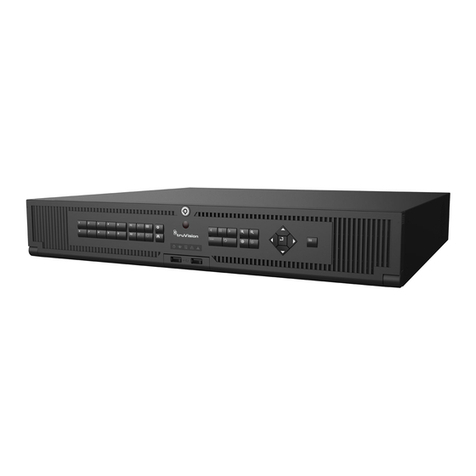
Interlogix
Interlogix TruVision NVR 22 quick start guide
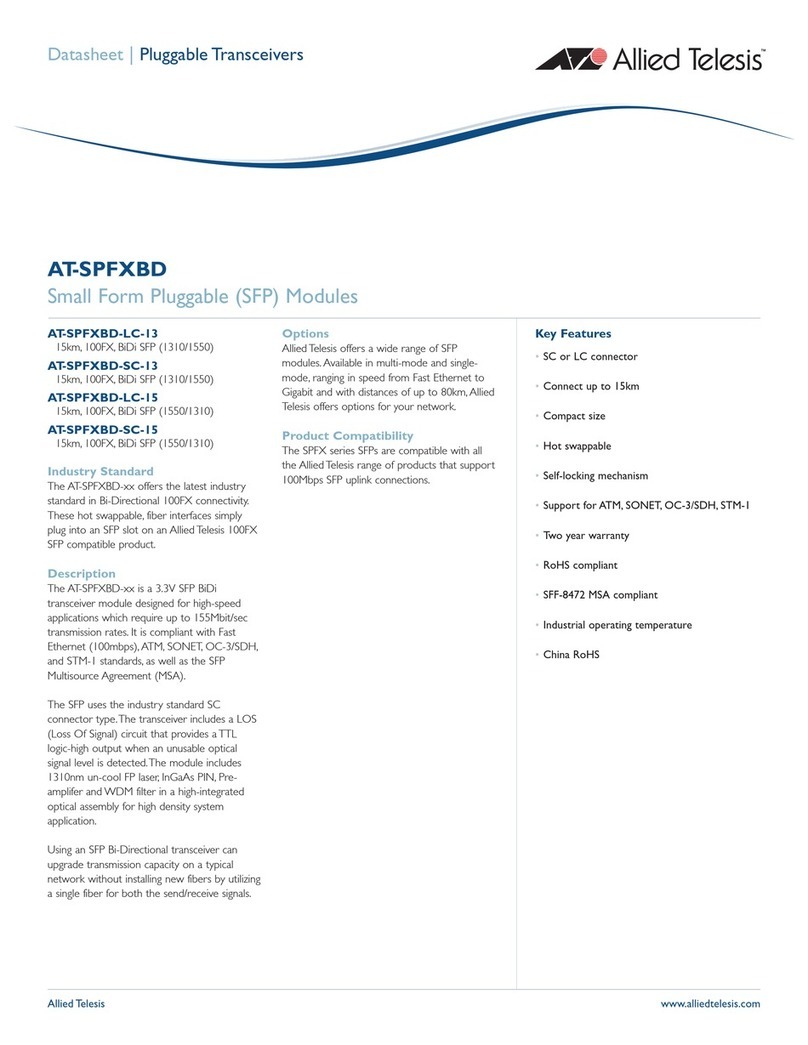
Allied Telesis
Allied Telesis AT-SPFXBD-LC-13 Specifications
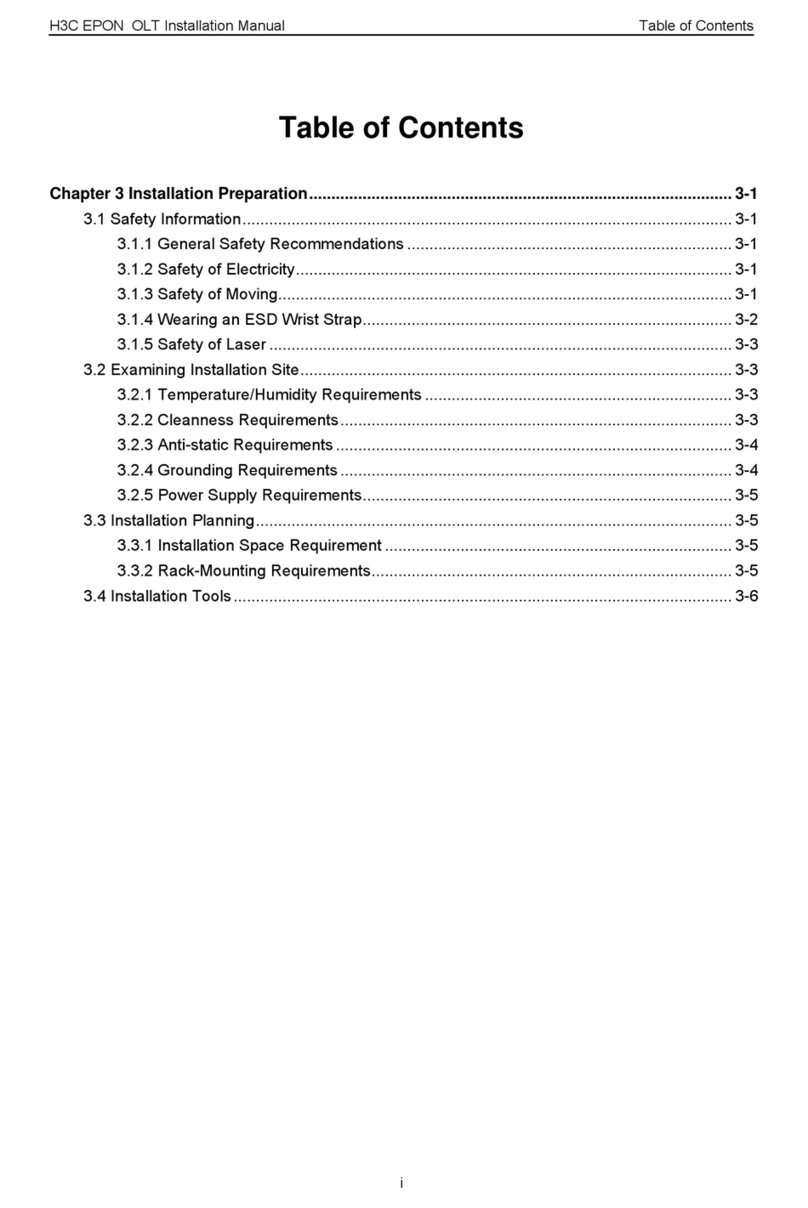
H3C
H3C S7500 Series installation manual

Grandstream Networks
Grandstream Networks GRP261 Series Administration guide
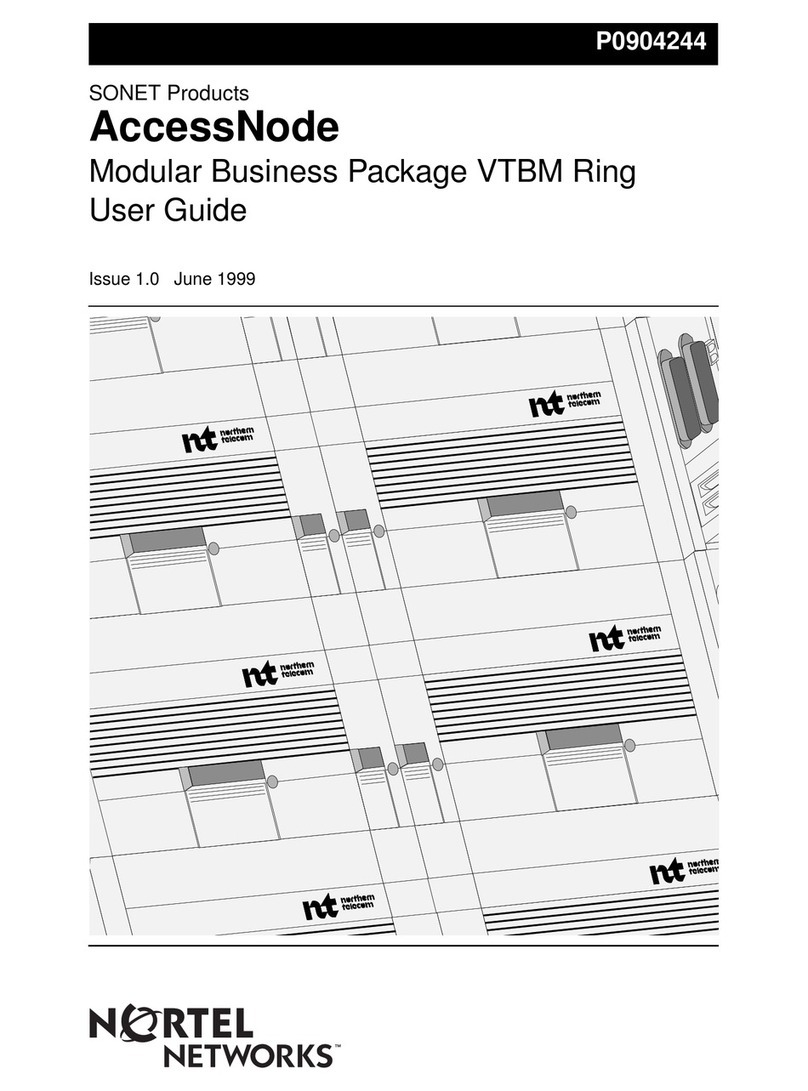
Nortel
Nortel SONET AccessNode user guide
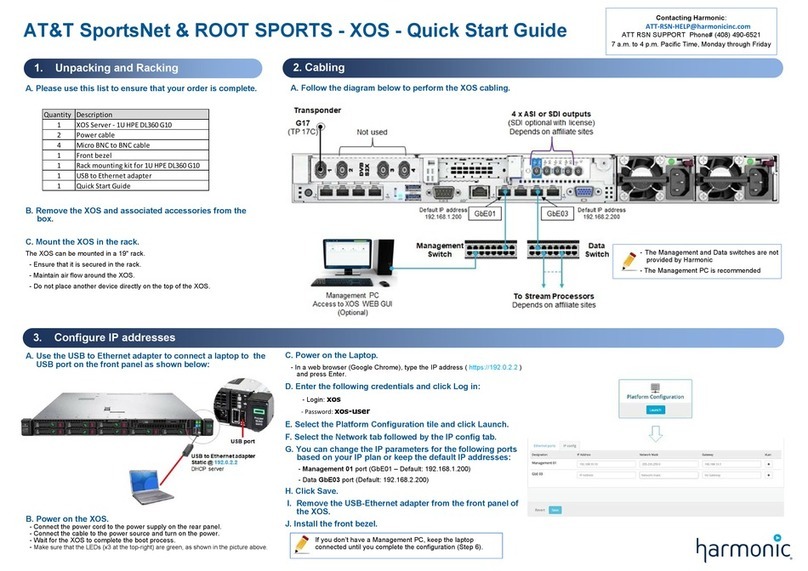
AT&T
AT&T SportsNet quick start guide

